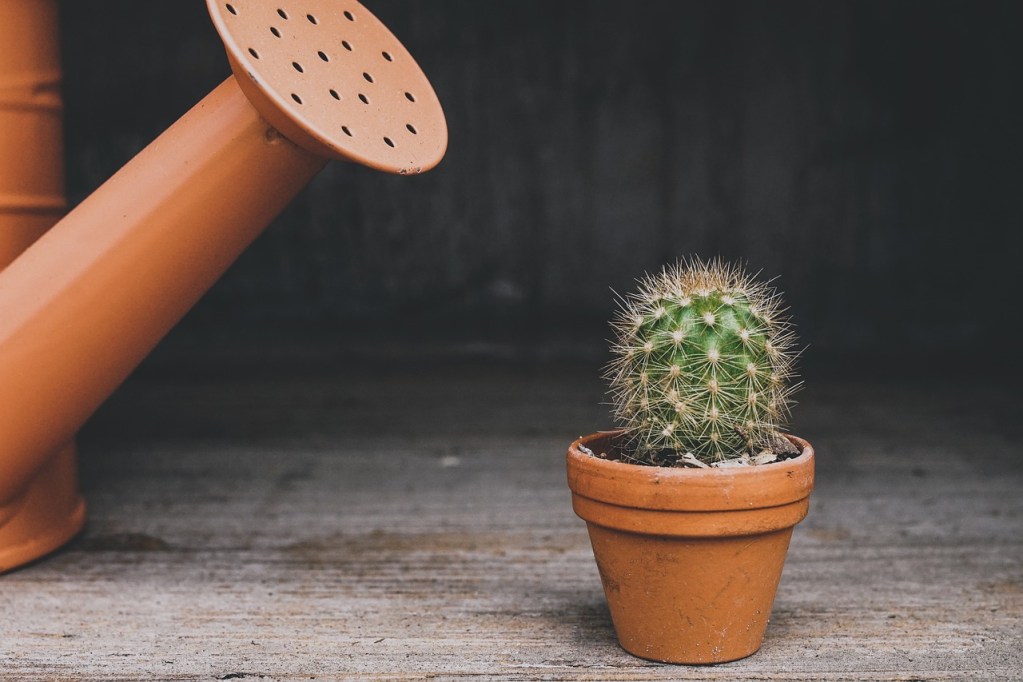
It’s common practice for plant owners to water their plants on a schedule, doing it at the same time every day or every week. There’s nothing wrong with following a plant watering schedule (there are even plant and gardening apps that help you keep track), but a set schedule may not provide the best care for certain plants. After all, plants differ widely in what they need to grow, so not all your plants will need the same amount of water at the same time. In fact, the same plant might need different amounts of water from week to week!
How much water a plant needs can vary from plant to plant and day to day. This is the first thing to keep in mind when it comes to watering your plants. Let’s go over how you can set up a watering schedule while still meeting the needs of each leafy (or spiky!) friend.
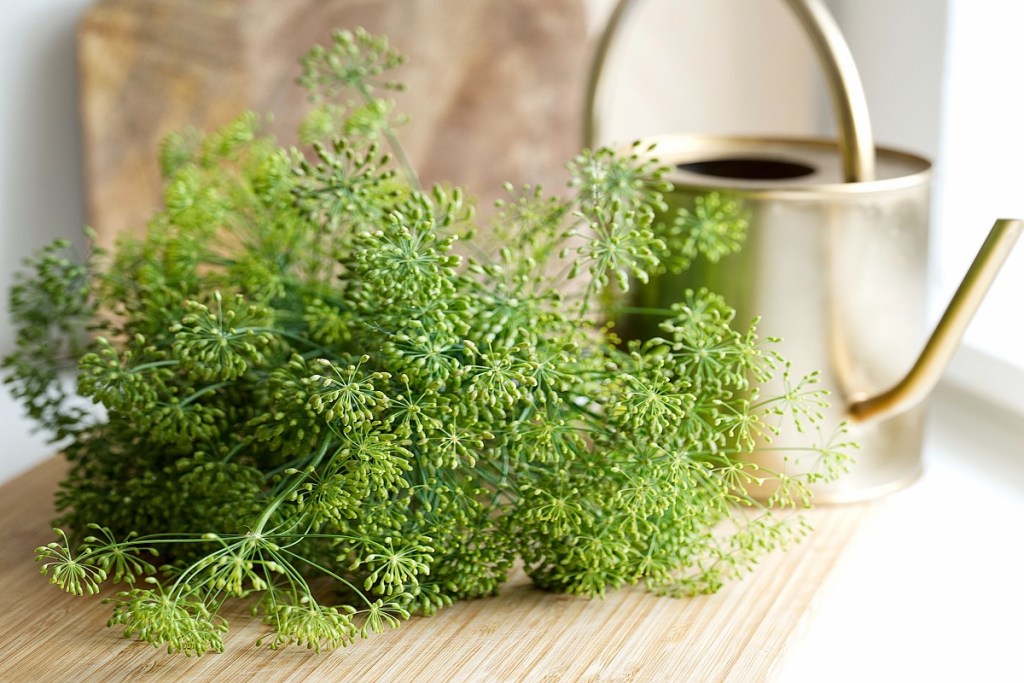
How often should you water indoor plants?
How often you water indoor plants depends on the type of plant you’re working with and its container size, lighting, humidity, and temperature situation. You’ll find that plants in brighter lighting will dry out more quickly than plants in lower lighting, which is why having pots with good drainage is equally as important as proper watering. The excess water needs somewhere to go.
Below, we’ll go over other factors you should keep in mind.
Plant size matters
The size of a plant matters when it comes to how much water you give it and how often you water it. Larger plants with bigger root systems require more water than small plants, which is why it’s important to make sure that the pot you choose is appropriate for the size of the plant. If you put a small plant in too large a pot, there’s a risk that the soil will be too waterlogged — this will cause the plant to drown or experience root rot. The reverse is also true. Large plants need to be in a pot that’s big enough for them; otherwise, they won’t get enough water, no matter how much you water them.
Each type of plant has a preferred watering method
Different species of plants also prefer different watering methods. Succulents and cacti like what’s called the soak and dry method, in which you wait until the top inch or so of soil is dry, then soak the plant until water starts to drip out the bottom. Then repeat.
Other plants, such as those native to tropical locations, prefer high humidity and slightly moist soil, which can be accomplished by daily misting.
The takeaway is that each plant has different needs, so you’ll want to know how a plant likes to be watered to figure out how it will fit into your schedule.
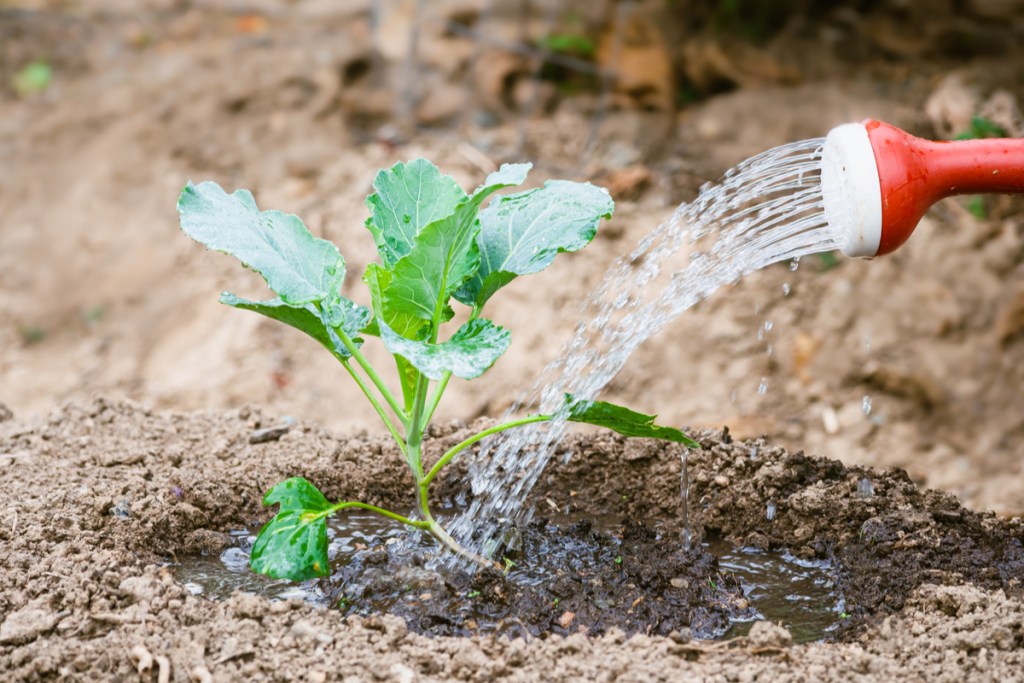
How often should you water outdoor plants?
Again, how often you water outdoor plants will vary depending on your environmental conditions and specific plants. That said, you’re likely to be watering outdoor plants more often than your indoor plants, especially during the growing season when the sun is out and the temperatures are high. Most outdoor plants need at least 1 inch of water each week, which can translate to a watering every 3 to 4 days.
If you have your plants inside of small containers instead of a bed or in the ground, you might need to water them even more frequently. Plant type matters, too — succulents and cacti will need much less water than those leafy greens when exposed to outdoor conditions.
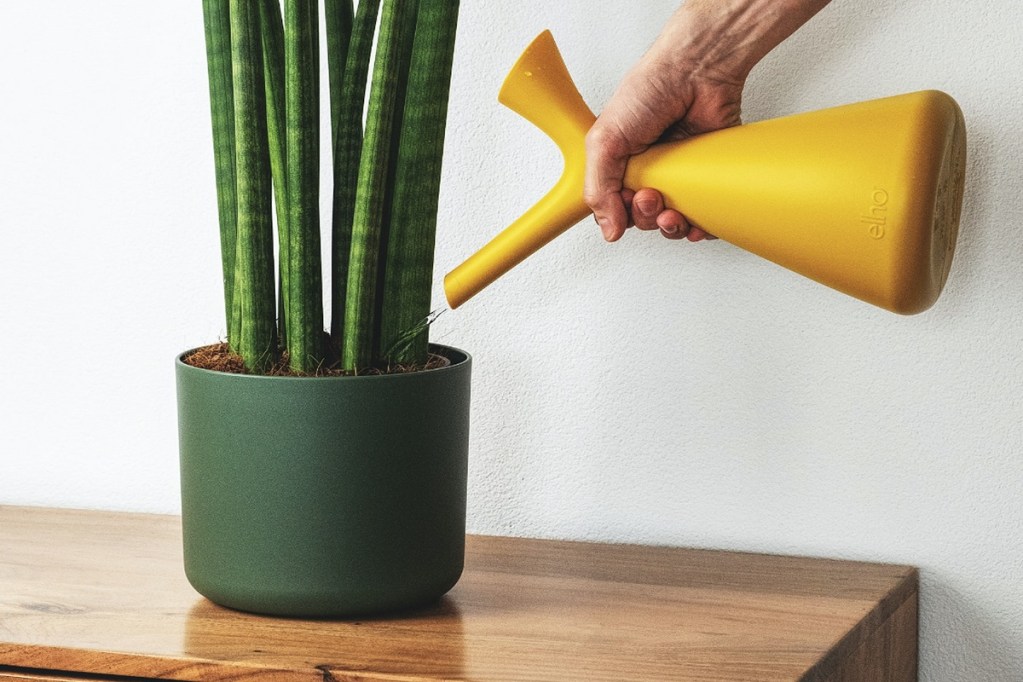
Setting up a watering schedule
Setting up a watering schedule isn’t as simple as picking a day and watering all of your plants once a week. No two plants are the same. That’s why when setting up a watering schedule, it’s important to take each plant’s needs into account.
The best schedule for your plant care routine is one where you check on all of your plants every one or two days. Depending on the type of plant, there could be different indicators for watering needs. A good rule of thumb is to water when the top inch or two of soil is dry; however, some plants (such as those native to a more humid or tropical environment) like to have their soil moist at all times.
If you notice brown leaf tips, you need to water the affected plant more often. Wilting and yellow leaves can indicate that you’re not giving your plant enough water, but they can also be symptoms of too much water. That’s where checking the soil daily comes in. Often, the best way to know whether your plants need water is the dryness of the soil.
If you’d like more structure than that, you can always create a spreadsheet. Set up the names of your plants across the top and number the rows on the side from 1 to 31. Put an X on the day of the month you water each plant and see if there’s a pattern. This approach will help you get a feel for how often each plant needs water.
If you’re leaving for vacation, don’t worry — you don’t have to fall behind on your plant watering schedule. Look into buying a plant water globe or water spike — these handy tools will help regulate the water that your plants get so you can rest assured you’ll be returning to healthy plants.

Consider using smart devices to help
In recent years, more and more smart devices have been released to help gardeners keep track of their plants’ watering schedule. Some, like plant watering meters, even measure the moisture level in the pot and send a push notification to your phone when it’s time to water. If you’d like to take the guesswork out of watering, consider purchasing an electronic soil monitor like the Wanfei Plant Soil Monitor.
There are also apps, such as Planta or Vera, where you can input the plants you have and keep track of your plant watering schedule.
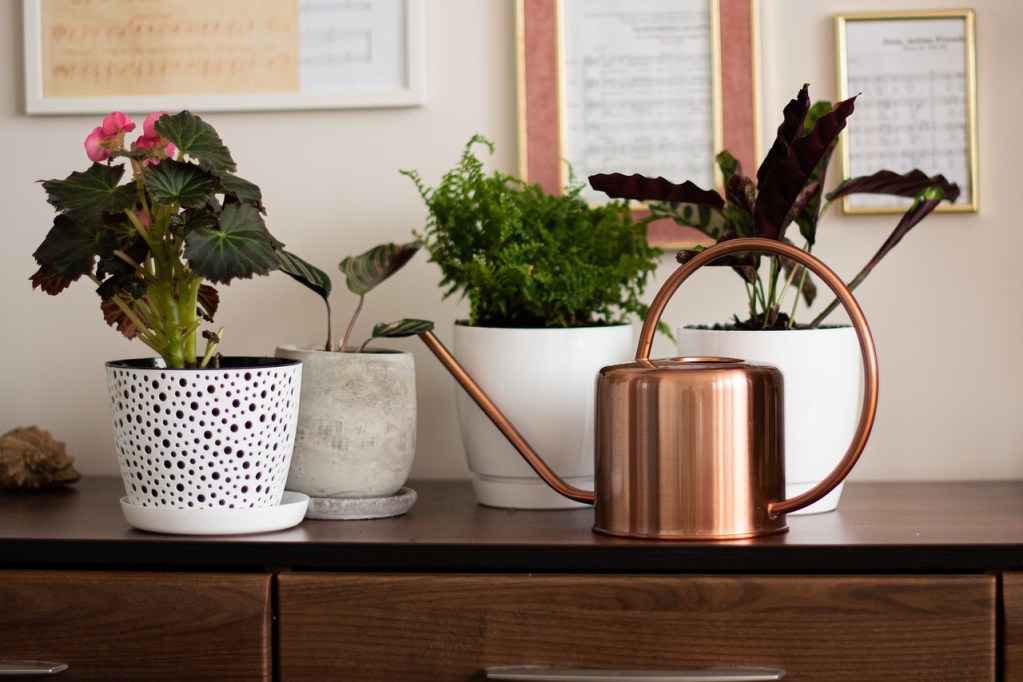
Don’t be afraid to deviate from your watering schedule
Even a spreadsheet won’t yield perfect results. When your plants need water depends largely on fluctuating environmental factors, so don’t worry if you have to water on a day you haven’t marked down. For example, you may have a string of days that makes your home extra dry, and you’ll notice that even that small shift can affect when your leafy friends get thirsty.
Figuring out how much water a plant needs is a trial-and-error effort. It may take a bit to settle into a schedule or get used to checking in on your plants every few days. But we promise that they’ll love you more for paying attention to their individual watering needs.


